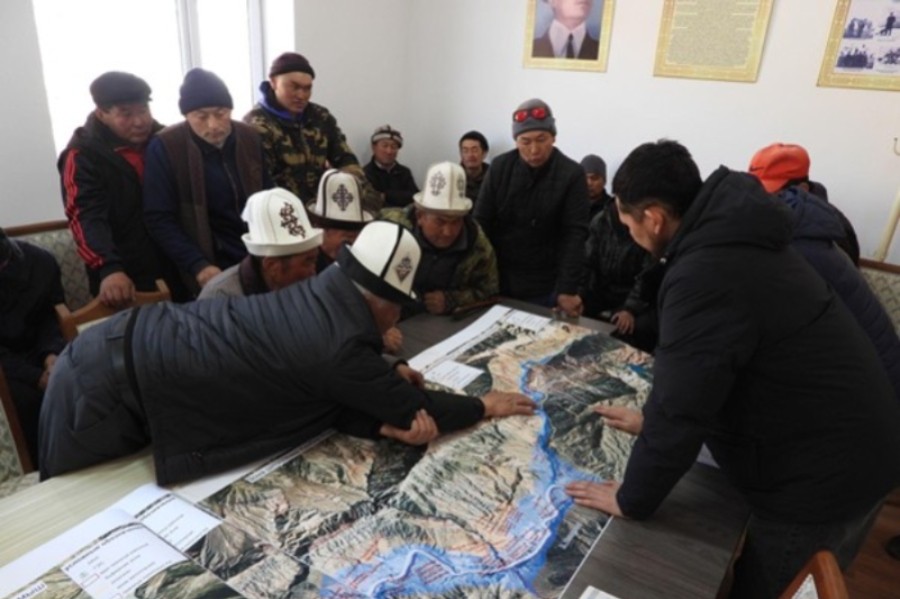
However, they express concern about its potential impact on livelihoods — primarily regarding access to pastures and the development of livestock farming, which is the main source of income for the population. The planned reservoir will flood more than 6,100 hectares, of which over 3,500 hectares are pasturelands. These lands are state-owned and have been leased to Electric Stations LLC.
Almost the entire territory within the flooding zone of the Kambarata HPP-1 has been officially leased to JSC Electric Stations. Previously, these lands were used by local ayil aimaks as winter and transitional pastures. Many residents possess pasture tickets, but do not have formal property rights — with the exception of three households, whose legal status requires further clarification.
The project’s goal was to support solutions aimed at mitigating the impacts of pasture degradation and other livestock farming conditions in the ayil aimaks of Toluk, Sary-Kamysh, Elmirbek Imanaliev (formerly Nichke-Say), and Atay in the Jalal-Abad region. During the construction of the hydropower plant, the creation of a reservoir by means of a dam will lead to the flooding of parts of the ayil aimaks’ territories, and the environmental impact will be significant for the local ecosystem.
In this context, the project team was tasked with conducting an analysis of the socio-economic risks and developing recommendations for the restoration of pastures and income sources for the local population whose lands will be affected by the flooding.